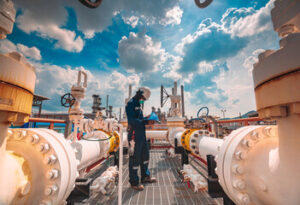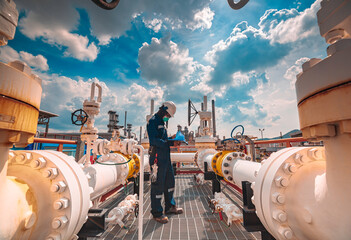Gas lines that corrode or leak can pose serious health and safety risks. In response, law requires building owners to inspect their gas piping systems periodically.
Under Local Law 152 of 2016, all buildings except those classified in occupancy group R-3 must have their gas piping inspected by a DOB-licensed master plumber or a qualified individual under an LMP’s direct supervision. The DOB online GPS1 portal must submit inspection reports and certifications by the applicable deadlines. For professional help, contact NYC Gas Piping Inspection.
Gas pipe size is important in ensuring the proper flow rate and pressure for your gas system. It is a crucial element to consider when designing a new gas installation, replacing old or worn gas pipes, or working on a current installation. Properly sizing the pipe can help eliminate problems such as low pressure, inefficient flow rate, and energy waste.
To calculate the required gas pipe size, you can use a common sizing chart that helps determine the necessary pipe diameter based on BTU output and pipe length. Start by determining the total Btu input rate of all gas appliances in your building or installation. Then, divide the Btu input rate by the piping’s maximum demand to get the total gas flow rate needed per hour. Once you know the total gas flow rate, multiply it by the index length to find the required pipe diameter in inches of nominal size.
It is also helpful to know the pipe’s pressure drop and how long each section of piping is. This will help you determine if there is enough capacity for the system, or if it needs to be enlarged. This information can be found in the sizing tables included with a listed piping system’s manufacturer’s installation instructions.
For example, if the piping system has four or more elbows or tees, you need to account for the additional pressure loss associated with each of these fittings. This can significantly reduce the available capacity of a long pipe run. To prevent this, you can account for each elbow or tee using an equivalent length calculation to ensure that your system will have sufficient capacity for its intended use.
All New York City buildings except those classified in occupancy group R-3 must have their gas piping systems inspected by a Licensed Master Plumber (LMP), or a qualified individual working under the direct and continuing supervision of an LMP, at least every four years according to the schedule set out in 1 RCNY SS103-10. The LMP must also complete a Gas Piping System Periodic Inspection Report(Opens in a new window) that details all of the results for the owner to review. The inspection report should identify conditions requiring correction, such as frayed or worn piping components that affect safe and reliable operation and non-code compliant installations or illegal connections.
Inspection Requirements
New York City’s Local Law 152 of 2016 requires that all buildings except one- and two-family homes and buildings classified in Occupancy Group R-3 must have their gas piping inspected by a New York State-licensed Master Plumber (LMP) or an individual working under the supervision of an LMP at least once every four years. These inspections must include all accessible portions of the building’s gas piping, including boiler rooms and amenity spaces, rooftop mechanical areas and any other publicly-accessible parts of the property where gas piping is located.
During the inspection, the LMP must examine all parts of the gas piping system for unsafe conditions that require correction. This includes frayed or worn piping components that can affect the safe and reliable operation of the system, non-code compliant installations or illegal connections, and other violations of NYC construction codes. The inspector must also test the piping for leaks of combustible gas.
The inspector will then issue the owner of the building a GPS1 Report within 30 days of the inspection, documenting all findings. Building owners are required to keep these reports and certifications on file for 10 years and make them available to DOB upon request. If the inspector identifies any hazardous or unsafe condition, the LMP must notify you and the utility that provides gas service to your building. Then, you must take immediate action to correct the condition and submit a new certification.
If the inspection results in a violation, you must submit a GPS2 Certificate of Compliance to DOB using the online portal. DOB will review the submitted information and determine if any additional work is necessary to comply with the regulation.
When you hire an LMP to inspect your building’s gas piping, DOB strongly recommends you use the “Know Your Construction Professional” tool to check the license status of the person and to view their disciplinary and voluntary surrender records. If you need more time to have your building inspected, you can request a 180-day extension using the GPS2 Online Submission Portal.
Inspection Reports
Pipelines are crucial infrastructure that carry essential products like oil, gas and water over long distances. However, these pipes are subject to wear and tear from the passing of time, and they can be damaged by corrosion, cracks or other problems that may affect safety and efficiency. Performing pipeline inspections regularly helps to extend their lifespan, minimize risk and ensure compliance with regulatory standards.
During a pipeline inspection, qualified inspectors use a variety of techniques to thoroughly examine the exterior and interior of each pipe. Some methods, like intelligent pigs that travel through the pipe and record data as they do so, are more precise than others, but all can spot issues such as corrosion, leaks, or anomalies that could threaten people and property.
Once a qualified inspector has inspected the pipe, they will provide the building owner with a report that shows the results of the inspection. The report must include all of the information gathered by the inspector, as well as any recommendations for corrective action. The report must be signed and sealed by the LMP who conducted or supervised the inspection. It is important that this certification is submitted to DOB within 60 days, or else the building will need to have a new inspection performed.
If a pipe inspection finds unsafe or hazardous conditions, the LMP must notify the building owner, the utility company that provides gas to the property, and the DOB. The building owner must then take steps to correct the condition(s), in accordance with NYC construction codes, and obtain a work permit where necessary.
Local Law 152 of 2016 requires that gas piping in all buildings except those classified as occupancy group R-3 be inspected by a licensed master plumber (LMP) or a qualified individual working under an LMP’s direct and continuing supervision at least once every four years. The law also requires that all exposed gas piping must be tested using portable combustible gas detectors, including those in boiler rooms, hallways and corridors, and all amenity and common spaces in multifamily residential buildings.
The City of New York maintains a database of inspection schedules online, organized by community district. Building owners can check this website to determine when their inspection is due, but they are required to submit an inspection report within 60 days of the date indicated in their notification letter. If an extension is needed, the building owner must request one via the city’s online portal before the deadline expires.
Corrective Action
The gas pipeline inspection process helps ensure that these important lines remain safe and functioning as they should. If an issue is found, the corresponding corrective steps need to be taken immediately in order to prevent further damage and possible accidents. This includes shutting off the gas to the affected area and evacuating any buildings or residences within the building. Taking these steps can help mitigate dangers and prevent the need for costly repairs or replacements down the road.
Gas line inspections can also help identify clogs, blockages and leaks. Regular inspections can catch these issues early, when they are much easier and cheaper to repair than once a problem becomes serious. Additionally, a regular inspection can uncover aging equipment that may need to be replaced or cleaned out, making your system run more efficiently and effectively and possibly saving you money in the long run.
Some of the most dangerous issues associated with natural gas lines are caused by improperly placed or positioned pipes. These problems can lead to leaks, ruptures or a lack of structural support. Through regular inspections, these issues can be spotted early and resolved before they cause major safety concerns or expensive damage to the system.
In addition to regular field inspections, many operators are required to perform specialized inspections based on specific factors or on particular types of issues. For example, if a system is found to be particularly prone to stress corrosion cracking (SCC), the operator will need to conduct a series of specialized inspections to help prevent these problems in the future.
SCC can be caused by a number of different factors, including operating and maintenance history, material properties, and environmental conditions. As such, the SCC-prone areas are typically more regularly inspected than other parts of the system.
Local Law 152 requires that all building owners with residential and commercial occupancies in New York City have their gas service lines inspected every three years in residential districts and annually in business districts. The inspections must include a gas leakage survey and visual inspection of atmospheric corrosion on all exposed piping to the gas meter inside the building. Additionally, the law requires that any bare steel or unprotected plastic gas service lines discovered during inspections or construction must be added to the operators’ DIMP written plans and either abandoned or converted to cathodic protection as soon as practicable.

